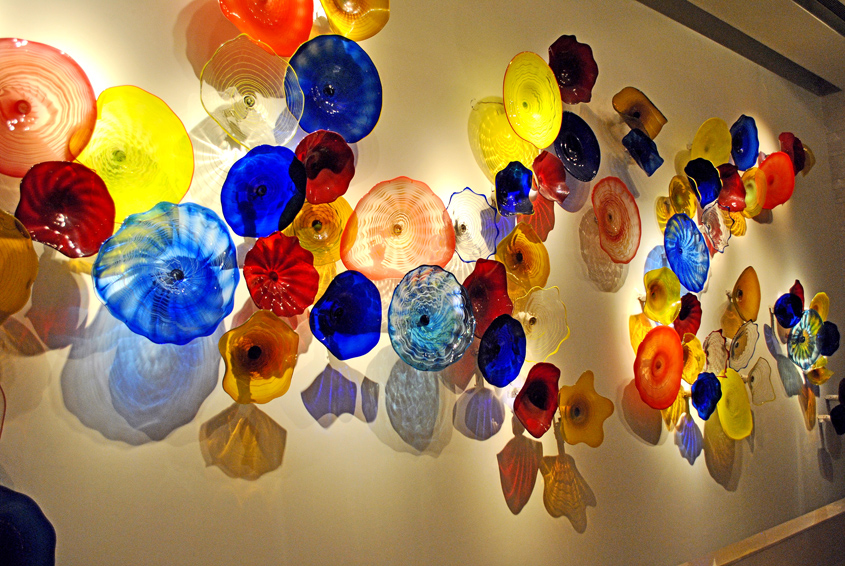It’s not like she was born into the art, or picked up glass and began working with it at the age of five. She is honest in accepting that glass has happened to her over a course of years. She was born in Assam, and raised by a strict father and an encouraging mother. “My mother always trusted me, believed in me and gave me that extra push,” she adds, and tears up by the end of her expression. An all-rounder, rebel and with a keen desire to learn, she left Assam behind and arrived in Delhi, after completing her graduation at Cotton College in Guwahati.
She was appalled by certain knowledge, which only comes to pass when one gets introduced to the world: she had no clue as to what to study, where to stay, or how to earn the money needed to do the former two. She shares at this point, “My friends suggested that I get a degree in business administration. But how was I to get the money? I was determined. I stayed with my friends for a while, and, then, took up a job as a travel executive. It gave me the opportunity to travel in educational tours to Europe, in 1997.” It was during the course of her short career at the travel agency that she came to discover things, which directly contributed to her becoming a glass artist. “I saw a store where people took old fabric from people to make new things, like rugs. I saw those beautiful patterns, and I wanted to explore,” she says, her hands drawing patterns in the air.
During her move to fabrics and acquiring the skills of the trade, she even began selling what she made. It taught her more than she could have asked for, and since she was in the business, one of her friends approached her with a suggestion that changed her life. “He asked me come look at some pieces of glass, you know showpieces and glasses which have designs on them,” adds Dey, “And there I was, with that piece of glass, observing the colors within its form, and the material was somewhat translucent, which allowed shadows to form on it.” This was the beginning, in the simplest sense of the words. She grew inquisitive, enquiring about matters like fragility, how to repair cracks, and where it all came from.
“The importance is to unite the design and the knowledge of the material. You can’t just abstractly design without the knowledge of the material you have to eventually turn into a piece of art.”
“Products then came from Morano in Italy, Indonesia, and in India, glass work was being done in Firozabad. That was the Mecca of India’s glass industry. And, I wanted to go see it.” The determination, from back then, shows through in her voice as she states the beginning of her expedition. This was a definitive point for Dey, she cannot emphasise the significance enough: “I wanted to create my identity, not borrow another’s.” She had no desire to follow in anyone’s footsteps. She reached Firozabad, a place dominated by a male population of glass workers. An only woman, she surpassed their expectations of how a woman must be when she went into glass factories and began observing the men working with glass. “After a long struggle I finally found someone who wanted to work with me and show me how glass blowing was done.” Soon, Reshmi was designing these products while simultaneously acquiring hands-on knowledge, busy experimenting, and creating a clientele where she sent these products for sale, which included home décor stores like Goodearth.

Having learnt the trade, and moving up and down between Delhi and Firozabad, she began to take interest in anything that had to do with glass. “I attended workshops with Petr Novotny, who was teaching about the art and the craft. I couldn’t help myself; I dived in and began learning.” From this indelible point in her life everything happened in rapid succession. She approached multiple minds from the glass art community during exhibitions and won a scholarship program to institutes in the UK. She has visited Italy, Austria and the USA among other countries. She kept learning, meeting other artists and developed an eye for merging the design and craft. Dey remarks, “The important thing is to unite the design and the knowledge of the material. You can’t just abstractly design without the knowledge of the material you have to eventually turn into a piece of art.” In her company, while staring at her works in her gallery, I learnt that in glass too there was art which was whole and did not have to necessarily serve a purpose. She wanted to bring such ideas to India, and even worked for four years with the International Labor Organisation, under their skill development programme, where she put these ideas to practice. She has even done installation at hotels like Vivanta by Taj and
Radisson Blu.
“I saw how children were taught to work with glass in studios in France. Whether rich or poor, they were all made to sit together and shown material to work with. And they learnt from each other. I wanted to see that in India.” Such are the humble beginnings of Glass Sutra, which today hosts a whole scale of programmes: from team building methods for corporate teams to having birthday parties where people can make their own glasses to drink out of. Dey notes her motivation when she adds, “I want people to break down their fears and to look at this for its beauty and the ease.” Glass Sutra conducts educational workshops, work towards awareness and also has a social outreach program to bring glass to underprivileged children. Reshmi Dey, with her struggle, has started building a glass art community in India and hopes to see it flourish by the end of her efforts.

